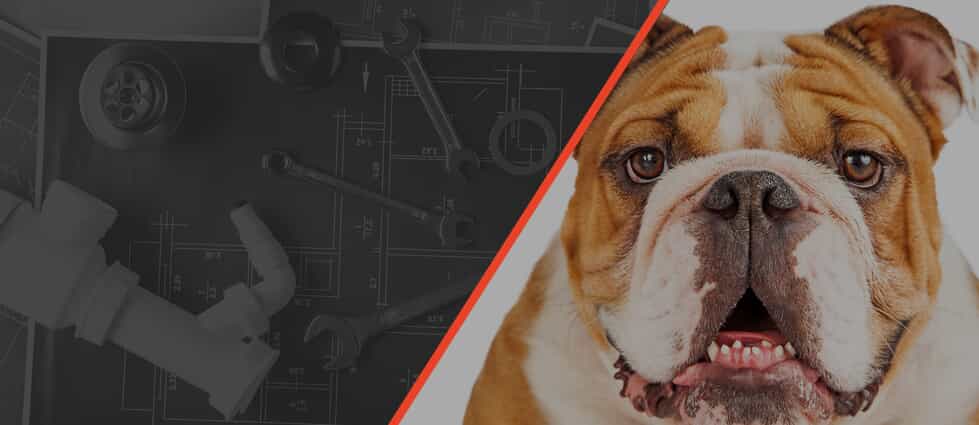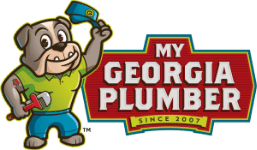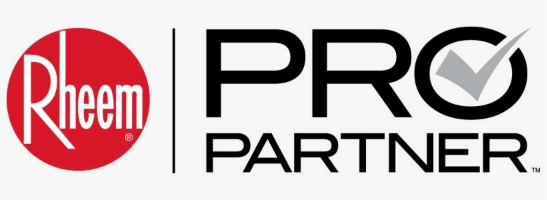
A continued summary of significant revisions of the International Plumbing Code to be published in the 2021 edition.
This is the continuation of a series of columns covering only the code changes that were approved as submitted from 2018 to the 2021 International Plumbing Code (IPC) change hearings. There were many code change proposals and two rounds of code hearings for the 2018 IPC. The following is a summary of the significant code changes that were approved during the International Code Council hearings in Columbus, Ohio, and Richmond, Va.
These code changes will appear in the 2021 edition of the International Plumbing Code, which will soon be published and available for jurisdictions to consider for adoption. Because it is possible for modifications to the proposed text to be made from the floor during the code hearing process and multiple code changes were made to the same code section, which will require ICC staff to develop the final text for a given code section incorporating all the changes, I recommend you refer to the 2021 IPC for the final version of any code changes reported on hereinafter.
Proposed additions are underlined and deletions are struck through. They are followed by the proponents’ published reason statements, along with any of my comments, as noted.
Code Change: IPC Section 608.1, 607.14.3, 608.17.2, Chapter 15
Chapter 15: Add referenced standards as follows:
1081-2014:
Performance Requirements for Backflow Preventers with Integral Pressure Reducing Boiler Feed Valve and Intermediate Atmospheric Vent Style for Domestic and Light Commercial Water
Revise as follows:
608.14.3 Backflow preventer with intermediate atmospheric vent.
Backflow preventers with intermediate atmospheric vents shall conform to ASSE 1012, ASSE 1081, or CSA B64.3. These devices shall be permitted to be installed where subject to continuous pressure conditions. The relief opening shall discharge by air gap and shall be prevented from being submerged.
608.17.2 Connections to boilers.
The potable supply to the boiler shall be equipped with a backflow preventer with an intermediate atmospheric vent complying with ASSE 1012, ASSE 1081, or CSA B64.3. Where conditioning chemicals are introduced into the system, the potable water connection shall be protected by an air gap or a reduced pressure principle backflow preventer, complying with ASSE 1013, CSA B64.4 or AWWA C511.
[insert PE1020_Table 608-1]
Proponent’s reason statement: ASSE 1081 covers devices that have combined products compliant to both ASSE 1003 and ASSE 1012. These devices have different hydrodynamic needs, hence the new standard for the device. They can be used in lieu of an ASSE 1012-compliant device with respect to boiler feed applications.
My comments: The ASSE 1081 standard is a new standard that was developed for devices that perform two functions: backflow prevention and pressure reduction. These devices needed to have a standard developed for a test to see if they perform the minimum requirements when performing both functions to the requirements of both ASSE 1003 pressure-reducing valves and ASSE 1012 backflow-prevention assemblies.
These devices have different flow and pressure drop characteristics, so they developed a new standard for the combined device. These ASSE 1081 devices can be used in lieu of an ASSE 1012 backflow-prevention assembly and an ASSE 1003 pressure-reducing device for boiler feed applications.
Code Change: IPC Section 605.12.3, 605.13.6
Revise as follows:
605.12.3 Solder joints.
Solder joints shall be made in accordance with ASTM B828. Cut tube ends shall be reamed to the full inside diameter of the tube end. Joint surfaces shall be cleaned. A flux conforming to ASTM B813 shall be applied. The joint shall be soldered with a solder conforming to ASTM B32. The joining of water supply piping shall be made with lead-free solder and fluxes. “Lead free” shall mean a chemical composition equal to or less than 0.2-percent lead. Solder and flux joining pipe or fittings intended to supply drinking water shall conform to NSF 61.
605.13.6 Solder joints.
Solder joints shall be made in accordance with the methods of ASTM B828. Cut tube ends shall be reamed to the full inside diameter of the tube end. Joint surfaces shall be cleaned. A flux conforming to ASTM B813 shall be applied. The joint shall be soldered with a solder conforming to ASTM B32. The joining of water supply piping shall be made with lead-free solder and flux. “Lead free” shall mean a chemical composition equal to or less than 0.2-percent lead. Solder and flux joining pipe or fittings intended to supply drinking water shall conform to NSF 61.
Proponent’s reason statement: NSF/ANSI Standard 61 Drinking Water System Components-Health Effects helps to ensure that products/materials will not contribute harmful levels of contaminants to drinking water. The current IPC and IRC already require conformance to NSF 61 for pipe, fittings, faucets, valves and tanks intended to supply drinking water.
This requirement should also apply to solders and flux. The current requirements in this section address lead content only but do not address the potential for other chemical contaminants as NSF 61 does. The code would be more protective of public health if it required NSF 61.
Code Change: IPC Section 202, 605.13.7
Add new definition as follows:
202 - GENERAL DEFINITIONS
PUSH-FIT FITTING
A mechanical fitting that joins pipes or tubes and achieves a seal by mating the pipe or tube into the fitting.
605.13.7 Push-fit fitting joints.
Push-fit fitting joints shall conform to ASSE 1061 and shall be installed in accordance with the manufacturer's instructions.
Proponent’s reason statement: Adding the definition from the ASSE 1061 standard for push-fit fittings.
Code Change: IPC Section 606.7
Delete without substitution:
606.7 Labeling of water distribution pipes in bundles.
Where water distribution piping is bundled at installation, each pipe in the bundle shall be identified using stenciling or commercially available pipe labels. The identification shall indicate the pipe contents and the direction of flow in the pipe. The interval of the identification markings on the pipe shall not exceed 25 feet (7620 mm). There shall be not less than one identification label on each pipe in each room, space or story.
Where water distribution piping is bundled at installation, each pipe in the bundle shall be identified using stenciling or commercially available pipe labels. The identification shall indicate the pipe contents and the direction of flow in the pipe. The interval of the identification markings on the pipe shall not exceed 25 feet (7620 mm). There shall be not less than one identification label on each pipe in each room, space or story.
Proponent’s reason statement: Current text is an unnecessary mandatory practice for flexible piping system, not required for any other piping system. The piping is all water distribution piping, so why mark it so? Marking the direction of flow is also unnecessary. The stenciling is not described and the interval seems arbitrary.
My comments: While this was touted as a cost reduction and unnecessary, the Plastic Pipe and Fittings Association testified that the pipe identification requirements using manual stenciling at 25-foot intervals was excessive. Underground PEX pipe should be labeled at the ends, identifying the source or fixture served.
There are other issues with bundling PEX tubing that the engineer must consider. Cold water, hot and hot water return pipe should not be bundled together. Ideally, each pipe should be insulated to prevent transferring heat from one pipe to another.
Code Change: IPC Section 607.1.1, 607.1.2, Chapter 15
Chapter 15: Add referenced standards as follows:
1085-2018:
Performance Requirements for Water Heaters for Emergency Equipment
1084-2018:
Performance Requirements for Water Heaters used as Temperature Limiting Devices
1082-2018:
Performance Requirements for Water Heaters Used as Temperature Control Devices for Hot Water Distribution Systems.
Revise as follows:
607.1.1 Temperature limiting means.
A thermostat control for a water heater shall not only serve as the temperature limiting means for the purposes of complying with the requirements of this code for maximum allowable hot or tempered water delivery temperature at fixtures where the water heater complies with ASSE 1082, ASSE 1084, or ASSE 1085.
607.1.2 Tempered water temperature control.
Tempered water shall be supplied through a water temperature controlled by one the following:
1. A limiting device that conforms conforming to ASSE 1070/ASME A112.1070/CSA B125.70 and shall limit the tempered water to not greater than set to a maximum of 110ºF (43ºC).
2. A thermostatic mixing valve conforming to ASSE 1017.
3. A water heater conforming to ASSE 1082.
4. A water heater conforming to ASSE 1084.
This provision shall not supersede the requirement for protective shower valves in accordance with Section 412.3.
Proponent’s reason statement: The restriction on the use of the water heater thermostat for regulating water temperature is based on standard water heaters. There are three new water heater standards that regulate the outlet temperature of the water heater. Hence, it is appropriate to reference these standards as the only water heaters in which the water heater thermostat can be used to regulate the upper temperature limit.
Tempered water is a comfort requirement, as well as a scald prevention requirement. However, comfort overrides the safety requirement since tempered water is limited to a maximum temperature of 110° F. Scalding temperatures are in excess of this temperature. Other viable means of controlling tempered water to 110° F or less are available in addition to a limiting device that complies with ASSE 1070/ASME A112.1070/CSA B125.70. The most common means of controlling tempered water is with a thermostatic mixing valve that complies with ASSE 1017.
A thermostatic mixing valve is an effective method of regulating the maximum temperature. The temperature is maintained within a few degrees, depending on the flow rate. Scalding temperatures are in excess of this temperature. Other viable means of maintaining the water temperature to a maximum of 110° F are water heaters meeting one of the three new water heater standards.
The three new standards for water heaters are ASSE 1082, ASSE 1084 and ASSE 1085. These water heaters are equivalent to ASSE 1017, ASSE 1070 and ASSE 1071, respectively. As such, they have the capability of providing an equivalent level of performance as the corresponding mixing valve. While a water heater complying with ASSE 1071 is designed to supply tepid water for emergency fixtures, the tepid temperature range can also meet the tempered temperature range. Hence, an ASSE 1085 water heater is also a viable option.
My comments: The restriction on the use of the water heater thermostat for regulating water temperature was because no matter what kind of water heater you use, the water heater cannot accurately control the water temperature at the point of use (shower, shampoo sink, etc.) when there is further mixing of cold water downstream of the water heater.
There are two hazards to address in hot water usage applications. One is scalding, the other is thermal shock. The ASSE standards 1082, 1084 and 1085 address limiting temperature controls for various flows, but does not address thermal shock. My concern is the manufacturers of the tankless water heaters that proposed this code change to allow increased sales of tankless heaters with temperature controls did not understand there is more than just a scalding hazard when they changed the word “not” to the word “only” in the code change.
The revised language creates confusion by implying that water heaters conforming to ASSE standards can actually control temperatures at the point of use. The old language was there because the traditional tank-type water heaters were not designed to accurately sense or control the outlet temperature of the water heater because they had temperature sensors near the bottom of the tank to sense incoming cold water and turn on the burner.
This design allows stacking to occur under normal intermittent operating conditions, where the outlet temperature of the water heater can rise as much as 30 degrees or more than the thermostat set point and, therefore, cannot accurately control the outlet temperature to the hot water distribution system. If the thermostat was set to 120 F allowing several minutes until a serious burn occurs in adults, and the temperature rises to 150 F, an adult male can get seriously burned in just under one second.
The time to sense or feel the hot water temperature and realize what is happening can take a couple of seconds, and reacting or thinking about which way to turn the controls can take a few more seconds. Waiting for the hot water temperature coming out of the shower or fixture fitting to drop to a lower temperature can take another five to 10 seconds, depending on the flow rate of the shower head or fixture fitting. This can expose a user to extremely hot temperatures for 10 seconds or more if the user is healthy and cognitive.
Many children, the elderly or handicapped individuals will not be able to react quickly and can suffer severe burn injuries.
With the code change as written, people could install a water heater listed to one of the ASSE-listed standards and not use appropriate temperature controls at the point of use in conditions other than showering applications. Water heaters conforming to the listed ASSE standards will not prevent thermal shock (a sudden change in temperature from hot to cold or cold to hot because of pressure imbalances from water usage between the hot- and cold-water systems).
Pressure-balancing or thermostatic controls should be used at the point of use for fixtures such as shampoo bowls, bidets and other similar fixtures where both hot and cold water are provided to the fixture and thermal shock can be an issue. For this same reason, there has historically been a prohibition of using in-line thermostatic shower valves for final temperature control if there was further mixing downstream.
Some types of tankless water heaters will see significant temperature changes with changes in flow even though they meet the ASSE standard because the flow and temperature conditions in the standard are limited. The ASSE standard does not test for all flow and pressure change conditions and like an in-line mixing valve, they cannot address thermal shock when there is further mixing downstream.
This section does not clearly warn that temperature controls are needed at fixtures where there is further mixing downstream and a bather is exposed to the outlet temperatures. The code change only references protections for showers in another subsection that a homeowner or installer may not read all the way down to in section 412.3. This code section should be reworded to make it clearer and less ambiguous.
I would prefer the prohibition of the water heater serving as the final temperature control with exceptions listed for various types of fixtures with the appropriate applications listed, and there should be requirements for downstream pressure-balancing or thermostatic controls to address thermal shock for fixtures other than showers.
I would also caution design professionals that using water heaters that limit the temperature to address only scalding concerns and have internal temperatures that are in the ideal growth temperature range for Legionella bacteria create a condition where bacteria and micro-organisms will grow and flourish in the water heater. I would like to see the ICC Code Action Committee try to clean up this language.
Code Change: IPC Section 608.15.2.1
Revise as follows:
608.15.2.1 Relief port piping.
The termination of the piping from the relief port or air gap fitting of a backflow preventer shall discharge to an approved indirect waste receptor or to the outdoors where it will not cause damage or create a nuisance. The indirect waste receptor and drainage piping shall be sized to drain the maximum discharge flow rate from the relief port as published by the backflow preventer manufacturer.
Proponent’s reason statement: It is not uncommon to find in the field a 4-inch, reduced-pressure principle backflow-preventer relief port discharging to a 2-inch floor drain. When the relief port opens at the full flow rate published by the manufacturer, the room where the backflow preventer is located will fill with water in a short period of time.
It is important that the indirect waste receptor and drain be properly sized to accommodate the maximum flow rate from a relief port. When multiple backflow preventers are located in the same room, the indirect waste receptor and drain only has to be sized for the largest backflow preventer. There is never an assumption of multiple relief ports opening at the same time. That would indicate a multiple failure scenario, which is not how the plumbing code evaluates failures.
The manufacturers are required to publish the flow rates through the backflow preventer relief port in their specification sheets. This information is readily available. The drain can be easily sized for the discharge in the manufacturer's published data.
My comments: There have been numerous cases where reduced-pressure backflow preventers of all sizes have discharged water and there was inadequate or no drainage in the area to carry away the discharge from the reduced-pressure zone backflow preventers discharge port under extreme conditions.
In many cases where the drainage was not planned properly, the entire basement mechanical rooms have flooded, causing tens of millions of dollars of damages to equipment, controls and finishes. Manufacturers of reduced-pressure principle backflow preventers publish discharge flow rates that give the maximum flow rate that will discharge from a relief port on a reduced-pressure zone backflow preventer.
The designer or contractor should look at the maximum possible discharge flow rate from the manufacturers’ published literature and make sure that a floor drain and horizontal sloping drain of adequate size and capacity are available — or find another means of disposal, such as a pump in place that can handle the anticipated flow.
For example, looking at a manufacturer’s literature, we can find that a 2-inch relief valve port on a 4-inch thru 10-inch RPZ backflow preventer can discharge more than 600 gallons/minute when subjected to 80 psi. Using the Manning formula, we can calculate the capacity of a sanitary drain flowing half full at 1 percent slope as follows:
Horizontal Sloping Drain Size Approx. Flow for half-full flow
4 inches 45
6 inches 130
8 inches 285
10 inches 510
12 inches 850
15 inches 2,500
Note: These values are based on the Manning formula with a coefficient of roughness “n” value of 0.13.
Code Change: IPC Section 609.2
Revise as follows:
Water service for Group I-2, Condition 2.
Hospitals Group I-2, Condition 2 facilities shall have a minimum of two water service pipes installed in such a manner so as to minimize the potential for an interruption of the supply of water in the event of a water main or water service pipe failure. sized such that with the loss of the largest service pipe, the remaining service pipes will meet the water demand for the entire facility. Each water service shall have a shut off valve in the building and a shut off valve at the utility-provided point of connection to the water main or other source of potable water.
Proponent’s reason statement: The existing language is not specific and could lead to several different required piping configurations. The proposed change provides needed clarity to the code and provides jurisdictions a reasonable means of enforcement. Existing language creates an overly burdensome requirement for hospitals on remote sites.
The proposed language sets specific requirements for the service lines into the building, with directions for capacity redundancy. It also clarifies a design configuration that provides maximum flexibility in event of failure of a single service line.
This proposal is submitted by the ICC Committee on Healthcare (CHC).
My comments: This language allows more than two water services to a hospital. One important note is to have a backflow preventer on all water service entrances. In addition, there should be a temperature gauge, pressure gauge, minimum adequately sized flushing valve with hose threads, and a water quality sampling valve on each building service entrance.
Isolation valves should be kept open on all building service lines so as not to let the water in a pipe go septic and grow bacteria if it sits unused for a long period of time.
Code Change: IPC Section 609.2.1
Add new text as follows:
609.2.1 Tracer.
A yellow insulated copper tracer wire or a product designed for that purpose or other approved conductor shall be installed adjacent to underground nonmetallic piping serving as a water service for a hospital. Access shall be provided to the tracer wire or the tracer wire shall terminate above ground at each end of the nonmetallic piping. The tracer wire size shall be not less than 18 AWG and the wire insulation type shall be suitable for direct burial.
Proponent’s reason statement: It would be prudent for hospitals to have the ability to locate their water service piping when utilizing nonmetallic piping underground. This provides the ability to locate the pipe without having to excavate, which can be an enormous cost savings. Locating the service pipe is critical to eliminate the possibility of damaging the pipe, avoiding the usual methods of doing so.
My comments: Tracer wires are required for nonmetallic gas lines for a similar reason. This is a good code change and it would probably be a good idea for design professionals to call for tracer wires for all nonmetallic pipe underground so as to easily locate the utilities.
Code Change: IPC Table 702.3, Chapter 15
Add new standard as follows:
ASTM
D2680 - 01(2014):
Standard Specification for Acrylonitrile-Butadiene-Styrene (ABS) and Poly(Vinyl Chloride) (PVC) Composite Sewer Piping
Revise as follows:
[insert PE1020_Table 702-3]
Proponent’s reason statement: A new standard for ABS piping is being added to increase flexibility in piping choices for building sewers.
This proposal is submitted by the ICC Plumbing/Mechanical/Gas Code Action Committee (PMG CAC). The PMG CAC was established by the ICC board of directors to pursue opportunities to improve and enhance the international codes or portions thereof that were under the purview of the PMG CAC. In 2017, the PMG CAC held one face-to-face meeting and 11 conference-call meetings. Numerous interested parties attended the committee meetings and offered their input.
This is a continuation of coverage on the significant plumbing code changes from the 2018 to the 2020 International Plumbing Code. Over the next few months, we will continue with the significant changes to the International Plumbing code. Following that we will cover the significant changes to the Uniform Plumbing Code.







